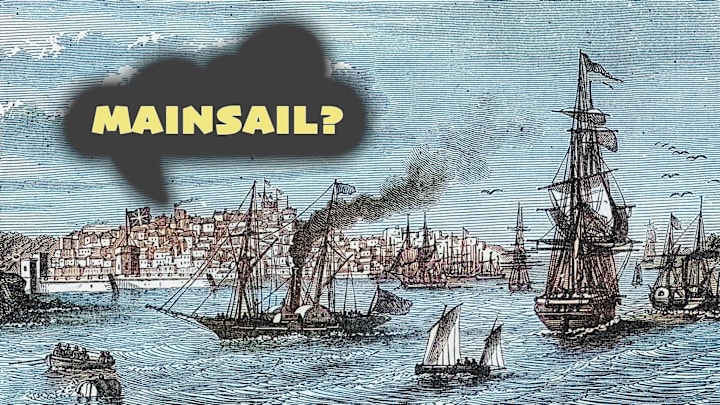Silent consonants and slurred vowels have long been the norm among seafarers. So if all your nautical knowledge comes from books, you might be mispronouncing quite a few common terms (or at least not saying them how a bona fide sailor would—dictionaries generally accept the more straightforward pronunciations as correct, too). Here are 10 tricky ones, from bowline to topgallant.
Bowline
Sailors don’t enunciate the line of bowline (which can refer to the rope used to fasten a square sail to the ship’s bow, or a type of knot with a secure loop at the end). It’s “BOH-lin.”
Ratline

Ratline, like bowline, is “RAT-lin.” Ratlines are the short, horizontal ropes that turn a shroud into a stepladder. (Shrouds are ropes attaching the mast to the hull for support.)
Mainsail
The mainsail is exactly what it sounds like: the main sail of a ship, fastened to the mainmast. Only it doesn’t actually sound like “main sail”—sailors say “MAIN-suhl.”
Headsail
Since you know how to say mainsail, you can probably guess where headsail is headed: “HED-suhl.” It’s any sail in front of the foremast (the mast closest to the bow).
Gunwale
Gunwales are the top edges of a ship’s sides. No whales or wails involved—it’s “GUN-uhl,” like tunnel.
Forecastle

The forecastle—“FOHK-suhl”—is the elevated deck near the bow or the crew’s quarters inside the bow.
Boatswain
The boatswain is the officer who oversees the crew’s duties on deck and all the equipment involved. The word is sometimes spelled bosun because that’s how it sounds: “BOH-suhn.”
Coxswain
The coxswain, meanwhile, is in charge of the ship’s boat (or sometimes just steers it). It’s pronounced “KOCK-suhn.”
Leeward

Leeward describes the side of a ship sheltered from the wind (as opposed to windward). Sailors are known to pronounce the word “LOO-urd.”
Topgallant
Topgallant—“tuh-GAL-uhnt”—can be used for a sail set above the topmast or for the part of a mast above the topmast. (The topmast is above the lower mast but isn’t always the highest mast.)
Learn More About Nautical Language:
